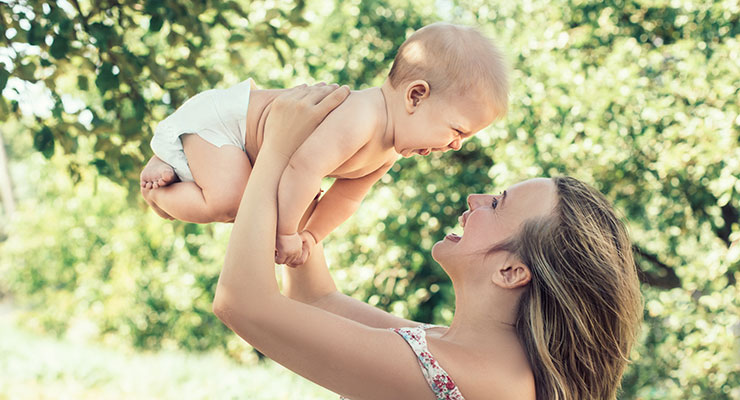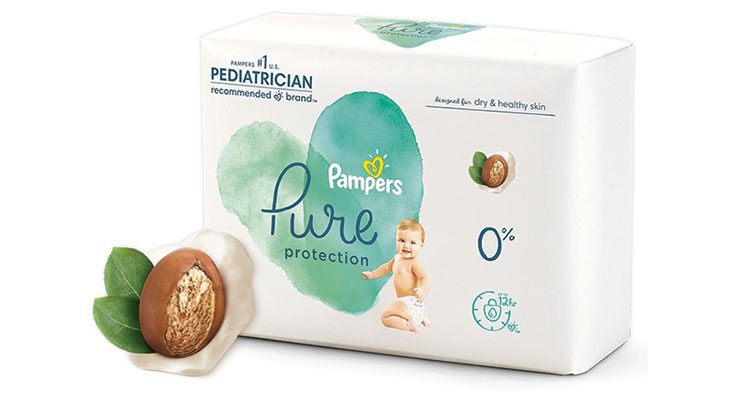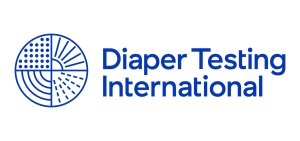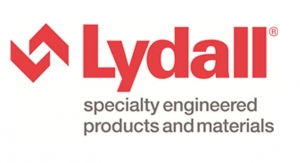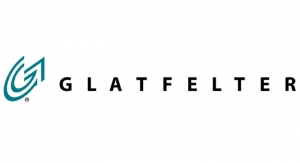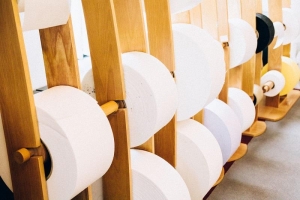Natalia Richer, Diaper Testing International01.06.21
Honest diapers’ launch eight years ago as a direct-to-consumer diaper subscription and its subsequent growth over the following two years into major retailers in the U.S., marked the first step in a diaper revolution that we still see today. While green diaper brands already existed back in 2012, Honest expanded on the safety and sustainability claims and further was able to deliver a diaper that was social media worthy. The range of available diaper prints to pick and choose into your customized diaper subscription box soon became fashion statements shared across millennial social media accounts.
Since then, we have seen the emergence of new brands fashioned after similar features, that have found their niche in the premium segment but have recently grown to explore the new masstige trend: inexpensive goods marketed as luxurious or premium. The national brands P&G and KC launched their own high-end lines of diapers in 2018 and 2019, respectively, with Pampers Pure and Huggies Special Delivery. Also making a claim in the premium segment are newly launched Healthynest, a “plant-based” diapering subscription that includes activity trays for babies; Kudos, the first diaper to have a 100% cotton topsheet; and Coterie, high-performance super absorbent diapers. Two new launches that have demonstrated huge growth in the masstige sector are Hello Bello (marketed as “premium, plant-based, affordable baby products”) and Dyper, bamboo viscose eco-friendly diapers that can be composted in industrial composting facilities. New to this highly competitive space is P&G’s All Good diapers launched exclusively in Walmart, priced similarly to Hello Bello.
Most of these new brands have something in common: Value added through social responsibility incentives, increase in safety-based claims (hypoallergenic, chlorine-free, “non-toxic”), a more sustainable supply chain through plant-based or PCR materials, or conversion with renewable energy.
Consumer Feedback: How Well is Brand Message Translated to Consumer Experience?
Euromonitor’s International Health and Nutrition Survey 2020 recently classified the top five features consumers for which consumers are willing to pay more in diapers in China. Three of the top five features Chinese consumers preferred and were willing for pay more for are reported to be: natural ingredients, sustainably sourced/produced and biodegradability. However, most of the plant-derived diapers converted in China such as bamboo viscose compostable diapers are actually exported abroad, with converters claiming there is no demand for these products in China.
There is clearly a disconnect between what consumers aspire to want, the level of available information regarding health and environmental impact of different diapers, and what consumer habits actually demonstrate.
In the U.S., we have seen a rise in safety and environmental based claims for diaper brands. How effectively have these changes in diaper design and marketing claims been communicated to the end consumer and what do parents actually care about?
To better understand what resonates the most with millennial consumers, our team at Diaper Testing International took to Amazon and did a full data scrape and review mining of the verified-purchased consumer reviews for a couple of diapers brands. The result was an analysis of more than 7000 verified reviews by parents.
When looking at consumer complaints, 46% of all mentions were related to diaper performance: leaks, rashes, absorbency and blowouts. Other complaints included construction defects, quality perception, product consistency, fit, print patterns, price and odor. Complaints involving mentions of natural ingredients or sustainability (or lack thereof) were attributed to less than 1% of all complaints.
In an endeavor to understand the extent of consumer interest in sustainability, our team identified a list of sustainability-related words and evaluated their prevalence across reviews of individual diaper brands. Words analyzed included any derivatives of the following (when used in context): ethic, bio-, responsible, footprint, compost, eco-, landfill, planet, recycle, renewable, earth, reuse, green, carbon, environment, sustainable. We found less than 1% of all reviews demonstrated interest (either pro or con) in sustainability.
Considering the significant marketing claims that Pampers Pure has made in relation to sustainability including: conversion with 100% certified renewable energy, 99% of all materials being reused, recycled or recovered, and 0% production waste ending in landfill; very little of that is reflected back when consumers share what they like or dislike about the product—with only 2% of reviews mentioning sustainability (including the word “eco-friendly.”)
On the other hand, when evaluating the consumer impact of natural or toxic-free claims we found marketing of safe and “chemical-free” diapers have produced a much more significant impact than sustainability, with a total of 3% of reviews mentioning a derivative of natural and safe. Words used to denote an interest in natural and safety included: fragrance, toxic, plant-based, hypoallergenic, harsh, harmful, chlorine, phthalates, safe, bleach, free of, chemicals, natural and organic.
It is in the natural and safe front where we found the biggest difference in consumer perception between premium and mass brands. P&G’s Pampers Pure had a total of 15% of reviews mention natural and safety versus Pampers Swaddlers where only 1% mentioned those words. Pure’s customers surpass even Honest’s when it comes to alluding to safety and “pureness” of diapers, with 10% of Honest’s reviews mentioning natural and safe words. Kimberly-Clark’s Huggies Special Delivery demonstrated a similar pattern with 7% of reviews mentioning safety versus its lower tiered Huggies Little Snugglers at 1%. It is clear Pampers Pure has done an incredible job marketing its backsheet cotton-blend and other “toxic-free” claims.
Other diaper features we evaluated include softness and prints. 10% of all reviews across various brands mentioned the word soft—clearly an important parameter in consumer perception. By far the largest success in delivery of soft diapers in Amazon comes from KC’s Huggies Special Delivery, with an overwhelming 40% of reviews mentioning the word “soft.” In comparison, all other popular Amazon brands evaluated ranged between 5–14% mentions of softness. “Cute” and “prints” were mentioned in only 2% of total reviews, again with a bigger distinction between mass and premium brands—where premium brands elicited higher interest in prints and designs from parent reviews.
At the end of the day, most of the reviews across all brands of diapers primarily focused on leakages, fit and performance. Perceived value, diaper performance and containment continue to define the main concerns of all parents. In narrowing down specifics for sustainability, natural and safety claims, softness and prints we attempted to identify delivery of added value in diaper brands and found there is little consumer interest in sustainability, even from users of greener brands (sold in Amazon, including Honest, Pure and Special Delivery).
What Will Be the Main Trends in Diapering Going Forward?
A focus on natural ingredients and features parents can enjoy including performance related enhancements, aesthetics such as fun or customized prints and curated parenting subscription boxes, will be in the forefront of consumer demand. While a small niche of millennial parents will continue to push for greener diapers (and put their money where their stance is), most of the push towards sustainability will continue to come from NGOs and giant retailers meeting ESG goals, rather than few informed buyers.
Until a game-changer in sustainability that can truly disrupt the way diapers are disposed of and reclaimed, such as diapers becoming part of a circular economy through recycling, or a re-working of the supply chain and logistics to compost diapers at an industrial level, diaper sustainability focus and claims will not sway most consumers except for the little added value they present or the correlation sustainability brings to an assumption of “natural” and “safer” for baby.
In short, CO2 emission talk ain’t great; plant-based, non-toxic ingredients and perceptible features are more worthwhile endeavors to gain support of current parents.
Since then, we have seen the emergence of new brands fashioned after similar features, that have found their niche in the premium segment but have recently grown to explore the new masstige trend: inexpensive goods marketed as luxurious or premium. The national brands P&G and KC launched their own high-end lines of diapers in 2018 and 2019, respectively, with Pampers Pure and Huggies Special Delivery. Also making a claim in the premium segment are newly launched Healthynest, a “plant-based” diapering subscription that includes activity trays for babies; Kudos, the first diaper to have a 100% cotton topsheet; and Coterie, high-performance super absorbent diapers. Two new launches that have demonstrated huge growth in the masstige sector are Hello Bello (marketed as “premium, plant-based, affordable baby products”) and Dyper, bamboo viscose eco-friendly diapers that can be composted in industrial composting facilities. New to this highly competitive space is P&G’s All Good diapers launched exclusively in Walmart, priced similarly to Hello Bello.
Most of these new brands have something in common: Value added through social responsibility incentives, increase in safety-based claims (hypoallergenic, chlorine-free, “non-toxic”), a more sustainable supply chain through plant-based or PCR materials, or conversion with renewable energy.
Consumer Feedback: How Well is Brand Message Translated to Consumer Experience?
Euromonitor’s International Health and Nutrition Survey 2020 recently classified the top five features consumers for which consumers are willing to pay more in diapers in China. Three of the top five features Chinese consumers preferred and were willing for pay more for are reported to be: natural ingredients, sustainably sourced/produced and biodegradability. However, most of the plant-derived diapers converted in China such as bamboo viscose compostable diapers are actually exported abroad, with converters claiming there is no demand for these products in China.
There is clearly a disconnect between what consumers aspire to want, the level of available information regarding health and environmental impact of different diapers, and what consumer habits actually demonstrate.
In the U.S., we have seen a rise in safety and environmental based claims for diaper brands. How effectively have these changes in diaper design and marketing claims been communicated to the end consumer and what do parents actually care about?
To better understand what resonates the most with millennial consumers, our team at Diaper Testing International took to Amazon and did a full data scrape and review mining of the verified-purchased consumer reviews for a couple of diapers brands. The result was an analysis of more than 7000 verified reviews by parents.
When looking at consumer complaints, 46% of all mentions were related to diaper performance: leaks, rashes, absorbency and blowouts. Other complaints included construction defects, quality perception, product consistency, fit, print patterns, price and odor. Complaints involving mentions of natural ingredients or sustainability (or lack thereof) were attributed to less than 1% of all complaints.
In an endeavor to understand the extent of consumer interest in sustainability, our team identified a list of sustainability-related words and evaluated their prevalence across reviews of individual diaper brands. Words analyzed included any derivatives of the following (when used in context): ethic, bio-, responsible, footprint, compost, eco-, landfill, planet, recycle, renewable, earth, reuse, green, carbon, environment, sustainable. We found less than 1% of all reviews demonstrated interest (either pro or con) in sustainability.
Considering the significant marketing claims that Pampers Pure has made in relation to sustainability including: conversion with 100% certified renewable energy, 99% of all materials being reused, recycled or recovered, and 0% production waste ending in landfill; very little of that is reflected back when consumers share what they like or dislike about the product—with only 2% of reviews mentioning sustainability (including the word “eco-friendly.”)
On the other hand, when evaluating the consumer impact of natural or toxic-free claims we found marketing of safe and “chemical-free” diapers have produced a much more significant impact than sustainability, with a total of 3% of reviews mentioning a derivative of natural and safe. Words used to denote an interest in natural and safety included: fragrance, toxic, plant-based, hypoallergenic, harsh, harmful, chlorine, phthalates, safe, bleach, free of, chemicals, natural and organic.
It is in the natural and safe front where we found the biggest difference in consumer perception between premium and mass brands. P&G’s Pampers Pure had a total of 15% of reviews mention natural and safety versus Pampers Swaddlers where only 1% mentioned those words. Pure’s customers surpass even Honest’s when it comes to alluding to safety and “pureness” of diapers, with 10% of Honest’s reviews mentioning natural and safe words. Kimberly-Clark’s Huggies Special Delivery demonstrated a similar pattern with 7% of reviews mentioning safety versus its lower tiered Huggies Little Snugglers at 1%. It is clear Pampers Pure has done an incredible job marketing its backsheet cotton-blend and other “toxic-free” claims.
Other diaper features we evaluated include softness and prints. 10% of all reviews across various brands mentioned the word soft—clearly an important parameter in consumer perception. By far the largest success in delivery of soft diapers in Amazon comes from KC’s Huggies Special Delivery, with an overwhelming 40% of reviews mentioning the word “soft.” In comparison, all other popular Amazon brands evaluated ranged between 5–14% mentions of softness. “Cute” and “prints” were mentioned in only 2% of total reviews, again with a bigger distinction between mass and premium brands—where premium brands elicited higher interest in prints and designs from parent reviews.
At the end of the day, most of the reviews across all brands of diapers primarily focused on leakages, fit and performance. Perceived value, diaper performance and containment continue to define the main concerns of all parents. In narrowing down specifics for sustainability, natural and safety claims, softness and prints we attempted to identify delivery of added value in diaper brands and found there is little consumer interest in sustainability, even from users of greener brands (sold in Amazon, including Honest, Pure and Special Delivery).
What Will Be the Main Trends in Diapering Going Forward?
A focus on natural ingredients and features parents can enjoy including performance related enhancements, aesthetics such as fun or customized prints and curated parenting subscription boxes, will be in the forefront of consumer demand. While a small niche of millennial parents will continue to push for greener diapers (and put their money where their stance is), most of the push towards sustainability will continue to come from NGOs and giant retailers meeting ESG goals, rather than few informed buyers.
Until a game-changer in sustainability that can truly disrupt the way diapers are disposed of and reclaimed, such as diapers becoming part of a circular economy through recycling, or a re-working of the supply chain and logistics to compost diapers at an industrial level, diaper sustainability focus and claims will not sway most consumers except for the little added value they present or the correlation sustainability brings to an assumption of “natural” and “safer” for baby.
In short, CO2 emission talk ain’t great; plant-based, non-toxic ingredients and perceptible features are more worthwhile endeavors to gain support of current parents.

